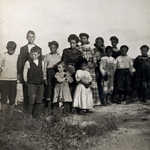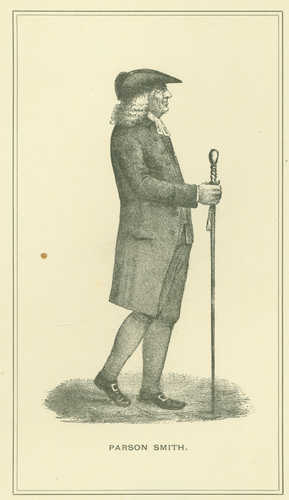Keywords: Myths
Item 7532
Glooskap looking at the whale smoking his pipe, 1884
Contributed by: Maine Historical Society Date: 1884 Location: Maine; New Hampshire Media: Ink on paper
Item 28655
The Mud-Turtle Jumping Over the Wigwam of His Father-In-Law, ca. 1884
Contributed by: Maine Historical Society Date: circa 1884 Location: Maine; New Brunswick, Canada Media: Ink on paper
Exhibit
Creation and other cultural tales are important to framing a culture's beliefs and values -- and passing those on. The Wabanaki -- Maliseet, Micmac, Passamaquoddy and Penobscot -- Indians of Maine and Nova Scotia tell stories of a cultural hero/creator, a giant who lived among them and who promised to return.
Exhibit
Longfellow: The Man Who Invented America
Henry Wadsworth Longfellow was a man and a poet of New England conscience. He was influenced by his ancestry and his Portland boyhood home and experience.
Site Page
"… Listen to Chapter Two The Press, Myths, and Black Peoples in Maine Listen to Chapter Three The Islanders Listen to…"
Site Page
"… people at Norridgewock, despite a persistent myth that Norridgewock was “abandoned” after a violent English raid in 1724."
Story
Reverend Thomas Smith of First Parish Portland
by Kristina Minister, Ph.D.
Pastor, Physician, Real Estate Speculator, and Agent for Wabanaki Genocide
Lesson Plan
Maine's Acadian Community: "Evangeline," Le Grand Dérangement, and Cultural Survival
Grade Level: 9-12
Content Area: English Language Arts, Social Studies
This lesson plan will introduce students to the history of the forced expulsion of thousands of people from Acadia, the Romantic look back at the tragedy in Henry Wadsworth Longfellow's famous epic poem Evangeline and the heroine's adoption as an Acadian cultural figure, and Maine's Acadian community today, along with their relations with Acadian New Brunswick and Nova Scotia residents and others in the Acadian Diaspora. Students will read and discuss primary documents, compare and contrast Le Grand Dérangement to other forced expulsions in Maine history and discuss the significance of cultural survival amidst hardships brought on by treaties, wars, and legislation.
Lesson Plan
What Remains: Learning about Maine Populations through Burial Customs
Grade Level: 6-8
Content Area: English Language Arts, Social Studies, Visual & Performing Arts
This lesson plan will give students an overview of how burial sites and gravestone material culture can assist historians and archaeologists in discovering information about people and migration over time. Students will learn how new scholarship can help to dispel harmful archaeological myths, look into the roles of religion and ethnicity in early Maine and New England immigrant and colonial settlements, and discover how to track changes in population and social values from the 1600s to early 1900s based on gravestone iconography and epitaphs.














